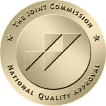Laparoscopic Inguinal Hernia Repair Post-Surgery Guide
The following information is intended to guide you through your post-op recovery:
Diet:
- For the first few days after your return home you should eat foods that you easily tolerate normally.
Medications:
- Follow the directions on any new prescriptions that your doctor has given you. You will be instructed prior to your discharge about what daily medications you will need to take when you return home.
- Pain management is an important part of your post-surgery care. You should expect some discomfort after your surgery. You may be sent home with a prescription for pain medication. It is important to take your pain medicine prior to your pain becoming intense in severity.
- PLEASE NOTE: No pain medication refills will be authorized on the weekends. If a refill is needed, the request must be made before 12:00 on Friday.
- Some side effects from the pain medications include nausea and constipation. If you experience nausea or vomiting related to your pain medications, you should stop the medication and take ibuprofen or acetaminophen for pain management.
Bowel Care:
- To prevent constipation you should drink plenty of fluids and take a stool softener daily.
- If you have not had a bowel movement within 48 hours after your return home, you should increase your fluid intake. You may take one single dose of Milk of Magnesia, as long as you have no abdominal distention.
Incision Care:
- You should apply ice packs to the area just above your groin (in the area of the repair) for the first 24-36 hours after your surgery. Apply the ice pack for 20-30 minutes every 1-2 hours while you are awake.
- You may remove the gauze dressing over your incision 48 hours after your surgery. Please leave the skin tapes in place for approximately 7-10 days.
- If your clothes irritate the incision or if you have some drainage you may leave a dry gauze dressing over your incision.
- You must observe your incision daily for signs or symptoms of infection. These signs would include: increased swelling, redness or smelly wound drainage. It is normal to have some swelling and bruising around your incision.
Physical Activity / Exercise:
- Minimize your activity level for the first 24 hours. Going to the bathroom is enough activity the first day.
Bathing and Showering:
- You may start showering 48 hours after your surgery. You may shower with your steri-strips and staples or stitches in place. Do not scrub across your steri-strips or staples. Do not bathe in a tub for 10-14 days after your surgery. This includes a “hot tub”.
- If you need to shave please be careful around your incision, and avoid shaving over the incision or any sutures in the area.
Driving:
- You may drive when you no longer are taking narcotic pain medications and you feel you can quickly respond to situations that will not place others in jeopardy.
Return to Work:
As a general guideline the following will give you a guide for when to return to work:
- Light lifting or no lifting type jobs: You may return to work from a few days to one week post-surgery.
- Heavy lifting or physical type jobs: You may return to work one week after surgery, with a weight/lifting restriction of no greater than 10-20# for 2 weeks total. If your job does not allow for light duty, then you will need to be off of work for 2 weeks after your surgery.
- Increase your lifting weight gradually as your doctor recommends.
IMPORTANT NOTE:
- Some men may develop bruising in their penis and scrotum 24-72 hours after their surgery. If this occurs, the bruising usually takes a couple of weeks to resolve. This does not have any effect on the function of the penis or scrotum.
Follow-up Appointments:
- You will need to return to the office for a follow-up visit usually within 2 weeks after your surgery. Please make sure you have your appointment scheduled.
Problems to Observe For:
Call the office for the following:
- Fever >101.0
- Uncontrolled pain. That is on a scale of 1-10 (10 being the worst pain imaginable) your pain is a level 7 or above.
- Nausea and / or vomiting that continue for 12-24 hours.
- Diarrhea that continues for 12-24 hours.
- Signs of a wound infection.
- Chest pain or difficulty breathing.
- Your incision separates or opens up.
If you have further questions after reading this handout, the office is open from 9:00AM to 5:00PM Monday through Friday. For emergencies after office hours, the answering service will be available when you call the office number.




